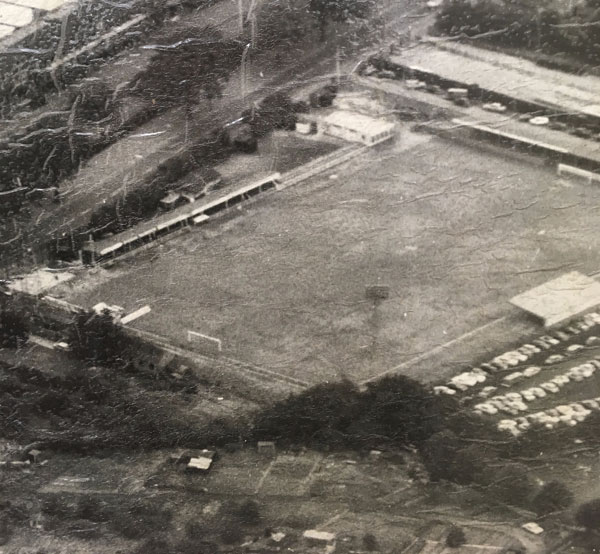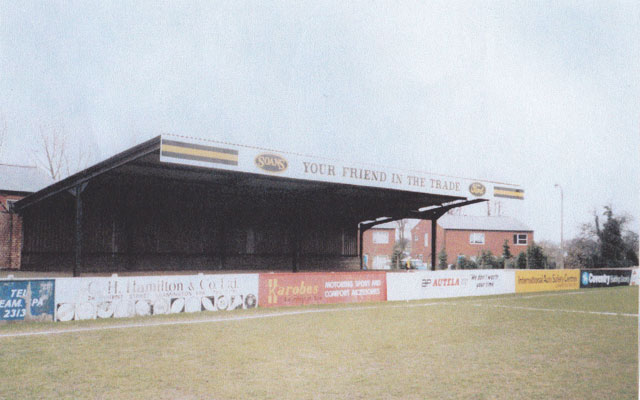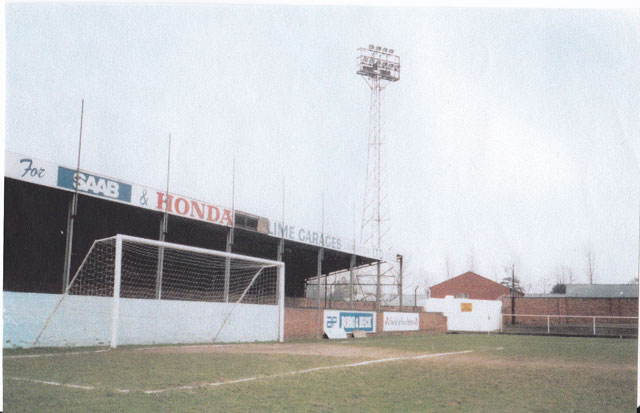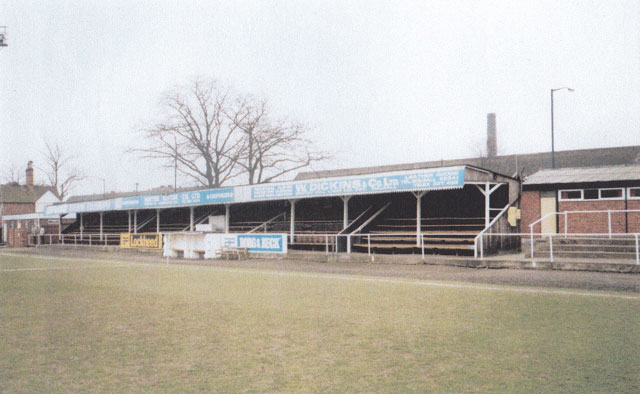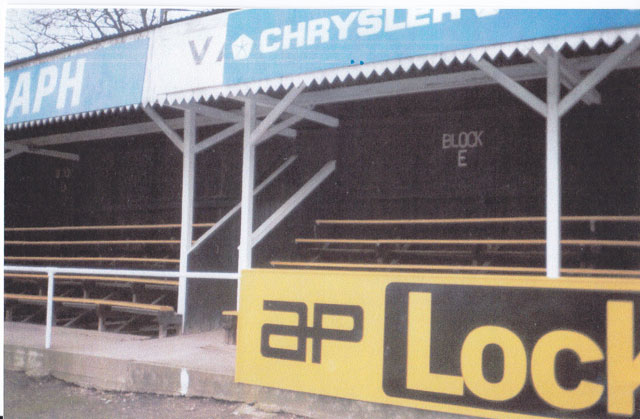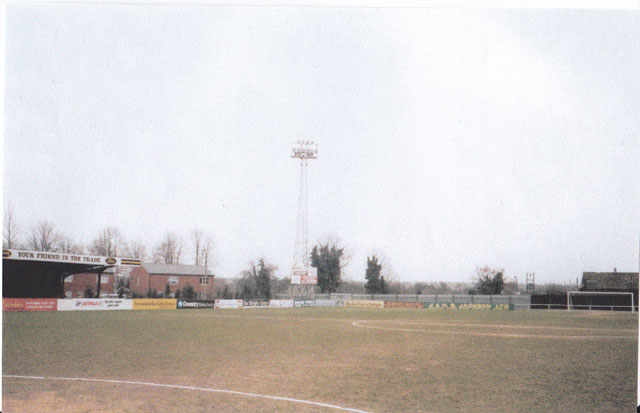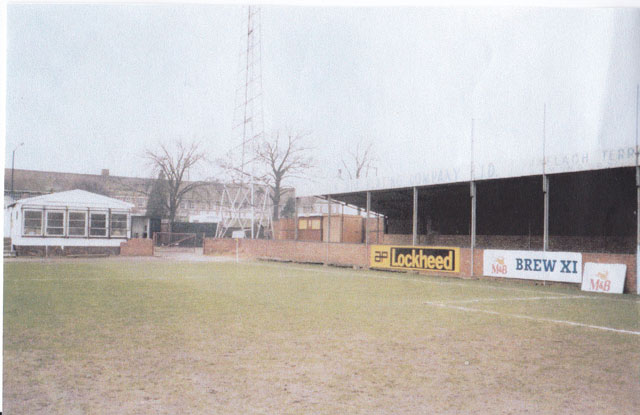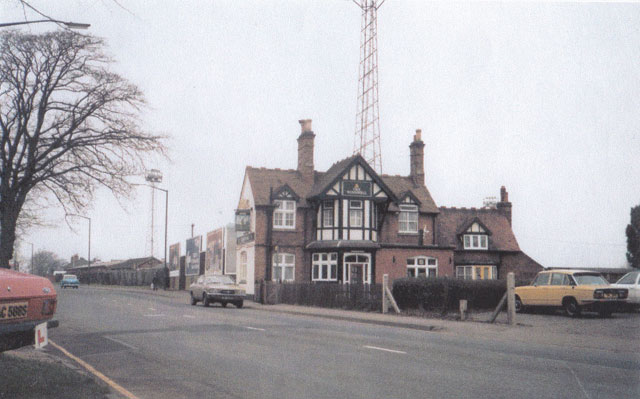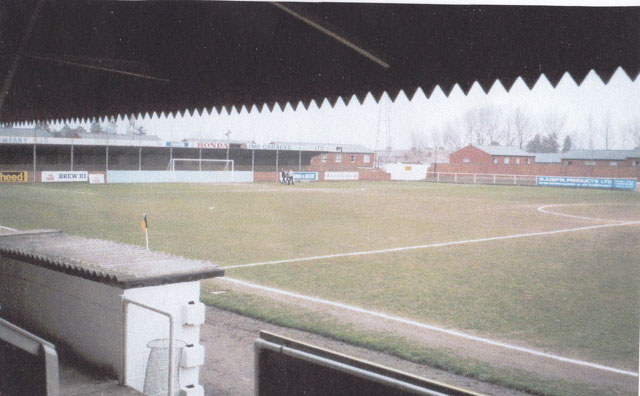Although it is likely that football of some sort began in Leamington prior to this, the first mention of an effort being made to establish a Football Club was found in the Leamington Spa Courier, dated October 3rd 1891. In the same edition of the newspaper an article stated that the newly formed club had played their first match, a home game on the Tachbrook Road ground, against Queen’s College, Birmingham, a 1-0 victory.
The venue would later be named The Windmill Ground, as it was situated next to The Windmill public house, a mile or so from the town centre. A windmill itself also stood until 1968 in what is now the pub’s car park, though it had been out of use may years before this.
Leamington Town, nicknamed the Magpies on account of their black and white halved shirts, played at the ground until 1898, when they moved to a new site on Old Warwick Road where they played from September 1898 until April 1905. They then moved back to the Tachbrook Road ground, sharing it with Leamington St. John's until April 1909. In the September of that year they moved to another site on the Shrubland Hall Estate, Tachbrook Road, which is now the Queensway/Kingsway housing estate.
In September 1912 the club moved back to Old Warwick Road, but this time on the opposite side of that road. This was a short lived stay however, as the new ground became too unsuitable to play on and Leamington Town returned to The Windmill Ground, where they remained until the end of the 1936/37 season, when they were voluntarily wound up. The Windmill Ground was sold to Coventry City FC for £1,739-6-8d, and in the two seasons before the outbreak of the Second World War it was used by their ‘A’ team. The ground was also used to stage Forces matches during the war.
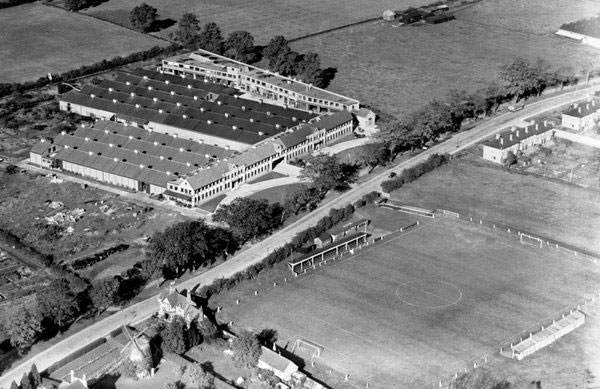
The Windmill Ground, Tachbrook Road, c1934
Football began to enjoy something of a renaissance after the war had ended, and though the Lockheed Hydraulics Company had formed its own works team in 1933 which competed in local leagues, a football club under the name of Lockheed Leamington emerged in 1946. The company was situated just across Tachbrook Road from the ground, and purchased it from Coventry City to give Leamington a senior football club to follow once more. The team adopted the nickname ‘The Brakes’ as a nod to the car parts the company produced - a link that remains to this day.
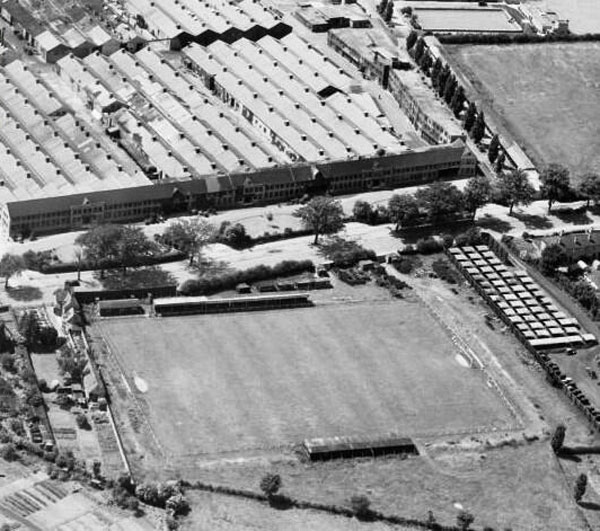
The Windmill Ground, Tachbrook Road, c1946
Given the historical evidence available it is reasonable to assume that the first structural developments at The Windmill Ground took place around the beginning of the 1930’s, as a Leamington Courier article from September 1935 reports that a new section of the main stand, which was on the Tachbrook Road side of the ground, was presented to the football club by its supporters club before an FA Cup tie against Nuneaton. The new section could hold 200 people, taking the total capacity of the stand up to 700.
At this time there was a small wooden enclosure opposite the main stand, for which there were plans to have a bigger steel cover in its place. Girders were delivered for this, but unfortunately Town’s financial troubles meant that this was never erected.
For a long time Leamington Town and their opposition used to use the Wheatsheaf public house a few hundred yards up Tachbrook Road for their changing facilities. Later on an old tram was used for this purpose. Turnstiles were also erected at the ground in 1935.
Behind both goals was open to the elements, with grassy banking. The pitch was always noted for its wonderful drainage as it was built on ash from the old gas works in the town, and as a consequence games were very rarely postponed when bad weather struck.
As the new Lockheed club became more successful and attendances grew, so the facilities were improved. Floodlights were purchased in 1965 from Manchester City. Photographs show that the covered enclosure opposite the main stand was replaced at some point by a smaller structure. It is believed that this was constructed around the same time that the floodlights were erected, the pitch relaid and the dressing rooms replaced. The stand was later known as the Soans Stand after its sponsors. That side of the ground was known as the Cemetery or ‘Bob Side’, as it cost a shilling (a bob) to get in.
Terracing extended around the Town End (The north end of the ground), which was also covered, and round onto another open portion on the Tachbrook Road side next to the stand. This is believed to have all been erected in the early 1950’s. At the side of this terracing was an old wooden tea hut, which was replaced with a large concrete prefabricated building which remained until the ground was demolished.
The Windmill Ground, Tachbrook Road, 1960's
There was no clubhouse at The Windmill Ground until the Brakes Social Club was built towards the end of the 1970’s. Plans were released for the building in July 1976. The Social Club was built on the Tachbrook Road side of the ground behind the open terrace next to the main stand, and it linked to the Board Room building situated behind the stand. It replaced the stands’ exit and turnstile gate which had stood since the 1930’s.

The Windmill Ground, Tachbrook Road, 1977
In its heyday the total capacity of The Windmill Ground was 6,000. The highest recorded attendance was 3,200, for an FA Cup 1st Round tie against Stafford Rangers in 1975, but it is likely that larger crowds attended games at the ground during the war years.
The beginning of the end for The Windmill Ground came on one of the greatest days in the clubs’ history - May 7th 1983. Brakes had beaten Poole Town 4-1 to win the Southern League Championship, but on what should have been a day of great celebrations the club were informed that they would not be promoted back to the Alliance Premier League (The original name of the National League) from which they had been relegated 12 months previously, as The Windmill Ground was now apparently not up to the required standard, despite nothing having been said when it was inspected by officials from the APL just a month earlier.
A further blow was dealt when it was announced that the club’s parent company, Automotive Products (Who had changed their name from Lockheed in 1973) were to sell the ground to A.C Lloyd, a building company. This was the beginning of a painful decline which saw the break up of one of the most successful teams in the clubs’ history, and while cup success was attained the following season relegation was to follow the year after.
A.C Lloyd allowed the club to remain at the ground until the Spring of 1988 at a peppercorn rent but they were thwarted at every turn as they attempted to find a site for a new stadium, and with the team having completed the 1987/88 campaign in the Midland Combination Premier Division, which was then at Step 4 of the Non League Pyramid, the decision was made to mothball Leamington FC while continuing the search for a new stadium site.
The final league fixture to take place at our old ground was on 16 April 1988. Walsall Wood were the visitors, the score was 2-2. Visiting player Roper had the distinction of scoring the final competitive goal at the ground.

Various parts of the Windmill Ground were sold off - the floodlights went to a security company in 1987, the turnstiles to VS Rugby, and parts of the stands and other buildings went to Stratford Town’s old Masons Road ground.
For those Brakes fans who were never fortunate enough to visit the Windmill Ground, the site is now the housing estate situated between Windmill Road and the Windmill Inn on Tachbrook Road as you head away from town on the B4087 towards our current home.
*With thanks to Terry Willoughby, Mark Chadderton, Phillip Pike, Keith Hancock and Kevin Watson for the information used.

